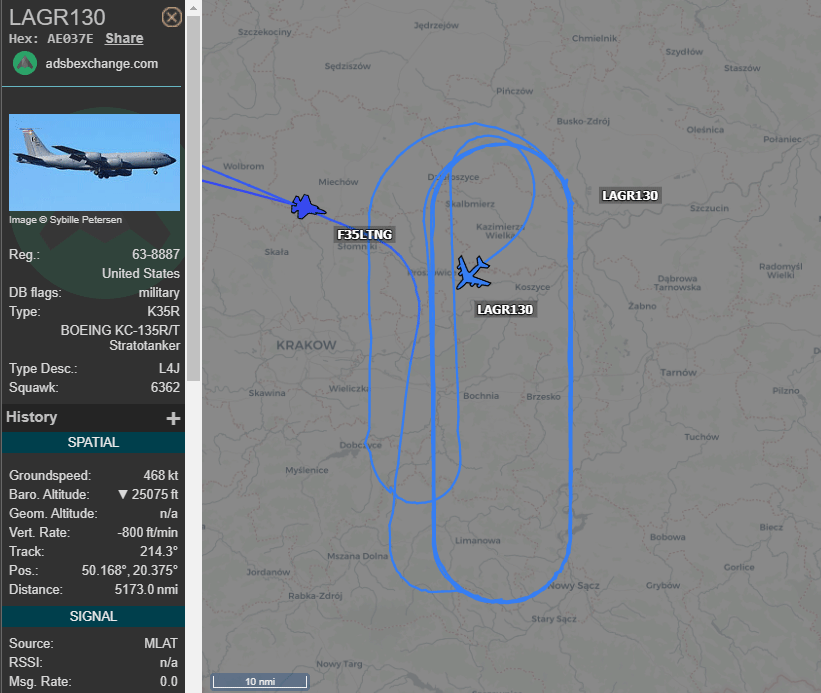Discover: AdsB Exchange - Your Guide To Live Flight Tracking!
Are you fascinated by the silent ballet of aircraft across the sky, eager to delve into the intricacies of flight paths, or perhaps a seasoned aviation enthusiast? Then you've come to the right place, as we unveil the world of real-time flight tracking, a realm where transparency meets technology, offering unparalleled access to the pulse of global aviation.
In today's interconnected world, the ability to monitor aircraft movements in real-time has become an invaluable tool for a wide array of individuals and organizations. From aviation enthusiasts and researchers to pilots, air traffic controllers, and even the general public, the demand for accessible and comprehensive flight information is higher than ever. This article delves into the core of this dynamic field, exploring the various platforms, technologies, and applications that make real-time flight tracking possible. We'll examine the intricacies of data acquisition, the methods used to display information, and the diverse benefits that these systems provide.
Real-time flight tracking is not merely about watching planes move across a screen. It is a sophisticated integration of various technologies that work in harmony to provide a comprehensive overview of air traffic. The cornerstone of these systems is the Automatic Dependent Surveillance-Broadcast (ADS-B) technology. Aircraft equipped with ADS-B transponders broadcast their identification, position, altitude, velocity, and other relevant flight data to ground stations and other aircraft. This data is transmitted via radio waves, typically on the 1090 MHz frequency for commercial aviation, with 978 MHz often used for lower-flying aircraft in the United States. These signals are received by ground-based receivers and relayed to processing centers, where the data is compiled and visualized on tracking platforms.
Another critical technology involved in real-time flight tracking is multilateration. Multilateration utilizes the signals from multiple receivers to pinpoint the precise location of aircraft, especially in areas where ADS-B coverage may be limited. This is achieved by calculating the time difference of arrival (TDOA) of signals from a single aircraft at different receiver locations. The intersection of these calculations provides an accurate estimate of the aircraft's position, filling in the gaps where ADS-B signals are unavailable. The synchronization of these receiving stations, often referred to as "feeders," is crucial for the accuracy of multilateration, with line color often indicating the quality of peer synchronization on tracking platforms.
Several platforms have emerged as leading players in the real-time flight tracking landscape. Websites such as ADS-B Exchange, FlightAware, and Flightradar24 provide a wealth of information, including live tracking maps, flight status updates, airport delay information, and aircraft history. These platforms aggregate data from various sources, including ADS-B receivers, radar data, and other publicly available sources. Users can search for specific flights by registration number, airline, or airport, allowing them to monitor the progress of their own flights, track the movements of specific aircraft, or simply satisfy their curiosity about the world of aviation.
For those seeking information on a specific aircraft, or one they fly, the first step is usually to search by registration number. This unique identifier, like a license plate for an aircraft, allows users to pinpoint the aircraft and view its real-time position, flight path, and other related data. Furthermore, these platforms often provide historical flight data, offering a comprehensive view of an aircraft's past movements, making them an invaluable resource for researchers, aviation enthusiasts, and anyone seeking to analyze flight patterns.
Beyond the basic tracking capabilities, many platforms offer enhanced flight information at no extra cost. This can include details such as aircraft type, altitude, speed, heading, and even the origin and destination airports. In addition, some platforms provide information on airport arrivals and departures, providing real-time updates on delays, cancellations, and other disruptions. This information is crucial for travelers, airport personnel, and air traffic controllers alike, aiding in efficient airport operations and informed decision-making.
The world of real-time flight tracking is not without its complexities. One of the primary challenges is ensuring data accuracy and coverage. While ADS-B technology provides a significant amount of data, its effectiveness can be limited by factors such as terrain, obstructions, and the availability of ground stations. This is where the concept of a collaborative community, like ADS-B Exchange, comes into play. By becoming a "feeder" and joining the exchange, enthusiasts can help expand coverage and fill in the "dark areas" where data is lacking. By contributing to the network, individuals enhance the overall quality and comprehensiveness of real-time flight tracking.
Another consideration is the issue of privacy. While most flight data is considered public, some individuals may be concerned about the visibility of their private or corporate aircraft movements. The platforms often offer options to opt-out of public tracking. Yet, a balance needs to be struck between the need for transparency and the protection of individual privacy rights.
Lets examine the functionalities of some of the major players in the field. ADS-B Exchange, for instance, distinguishes itself as an independent, community-driven platform. Unlike some of its competitors, it is built and run by enthusiasts, for enthusiasts. It emphasizes transparency and inclusivity, offering an open and collaborative environment where users can contribute to the network by becoming feeders. ADS-B Exchange allows users to see detailed flight information by simply hovering the cursor over a flight on the map, revealing details such as the aircraft's registration number, altitude, and speed. Users also have access to airport arrivals and departures, offering comprehensive flight status and airport delay data.
FlightAware is another well-known platform offering a wide array of features. It provides real-time flight tracking, historical flight data, airport information, and tools for aviation professionals. Flightradar24 is another popular choice, known for its visually appealing maps and comprehensive data coverage. It aggregates data from various sources, including ADS-B, radar, and other sources, and offers a user-friendly interface for tracking flights worldwide.
The application of real-time flight tracking extends beyond simply satisfying curiosity. It has significant implications in various fields, including:
- Air Traffic Management: Real-time data allows air traffic controllers to monitor aircraft movements, optimize flight paths, and manage airspace efficiently.
- Search and Rescue: Flight tracking data is invaluable in locating missing aircraft and coordinating search and rescue operations.
- Aviation Safety: By monitoring flight paths and aircraft performance, it is possible to identify potential safety hazards and investigate incidents.
- Research and Analysis: Researchers use flight data to study flight patterns, analyze aviation trends, and develop new technologies.
- Logistics and Transportation: Logistics companies use flight tracking to monitor the movement of cargo and optimize their supply chains.
The world of real-time flight tracking is constantly evolving, with new technologies and features emerging regularly. One area of development is the use of artificial intelligence (AI) and machine learning (ML) to analyze flight data and provide more accurate predictions and insights. This includes predicting flight delays, identifying potential safety hazards, and optimizing flight routes. Another trend is the integration of flight tracking data with other data sources, such as weather information, to provide a more comprehensive overview of the aviation environment.
As technology advances, the capabilities of real-time flight tracking will only continue to grow. We can expect to see even more accurate data, enhanced visualization tools, and a wider range of applications. The collaborative nature of this field, with enthusiasts, professionals, and organizations working together, ensures continued innovation and improvement.
For users seeking assistance or encountering issues with services, such as Inflight Exchange (IFX)tm, the help desk is available to address any questions about the software suite. Contact information, such as a phone number (+1 571 370 9700) and email, is usually readily available for support.
For those looking to alter flight plans, many airlines offer flight exchange options. Upon purchasing a ticket, travelers can often select the "exchange flight" option, allowing them to modify their itinerary. On the "select and exchange flight" screen, the user can choose a flight and search for a new one. The system presents options, and after the desired flight and ticket class are selected, the user can "confirm and continue". Please note that the exchange rate applied will typically be the prevailing exchange rate at the time of payment processing if the exchange is initiated outside of the airline's primary website, as noted in the terms of service.
As September 13th, 2023 (estimated time 9:30 PM ET) neared, excitement built as a new tracking map feature, still in beta, was announced. The continuous development of such features shows the evolving nature of the platforms and the commitment to providing innovative tools to users.
In the fast-paced world of aviation, the need for accurate, accessible, and comprehensive flight information has never been greater. Real-time flight tracking is at the forefront of this revolution, providing a powerful toolset for enthusiasts, professionals, and organizations alike. As technology continues to advance, we can expect to see even more innovative features, enhanced data accuracy, and a wider range of applications. The future of flight tracking is bright, with a focus on transparency, collaboration, and the continued pursuit of excellence. Whether you're a seasoned aviation professional or simply curious, the world of real-time flight tracking offers a fascinating and informative journey into the heart of global aviation.
| Category | Details |
|---|---|
| Service Name | ADS-B Exchange, FlightAware, Flightradar24, Inflight Exchange (IFX)tm |
| Core Technology | Automatic Dependent Surveillance-Broadcast (ADS-B), Multilateration |
| Data Sources | ADS-B receivers, radar data, other publicly available sources |
| Key Features | Live tracking maps, flight status, airport delays, aircraft history, registration number search |
| Benefits | Air traffic management, search and rescue, aviation safety, research and analysis, logistics and transportation |
| Platforms | Websites, mobile applications |
| Community Involvement | Feeder networks, open-source initiatives |
| Potential Challenges | Data accuracy, coverage limitations, privacy concerns |
| Contact Information (IFX) | Phone: (+1) 571 370 9700, Email (as provided by the service) |
| Flight Exchange Process | Select "exchange flight" on the purchased ticket, select flights and confirm. |
| Example URL | ADS-B Exchange |


